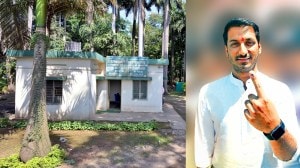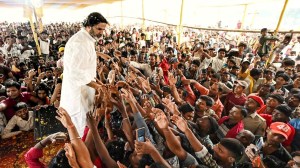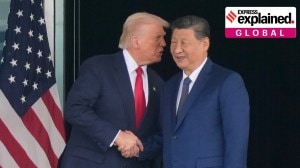Governing the Governor is next on the agenda
NEW DELHI, Oct 23: If accountability has any meaning, Romesh Bhandari should have resigned by now. The President's decision to return the U...

NEW DELHI, Oct 23: If accountability has any meaning, Romesh Bhandari should have resigned by now. The President’s decision to return the Union Cabinet’s recommendation for Central Rule in Uttar Pradesh, which was based on the Governor’s report, is tantamount to an expression of no-confidence in Bhandari.
That the Governor had made a grave error of judgement was also borne out by the view of legal experts, including the Attorney General, that there were insufficient grounds for recommending President’s Rule.
And yet the irony of it all is that when the Government has the strongest case to get rid of him, it is least inclined to do so. The reversal of the Cabinet’s decision amounts to its rejection of Bhandari’s recommendation.
The whole affair has caused immense embarrassment to Gujral at home and abroad, and created an impression that the country is hurtling from one crisis to another. The Prime Minister had to cancel his official trips to Bonn and Paris which included important meetings with investors.
But the compulsions of realpolitik being what they are, Gujral can ill afford to rub salt in the wounds of Sitaram Kesri and Mulayam Singh Yadav at this juncture, and push his luck too far. For it is an open secret that the Congress and the Samajwadi Party had much to do with his appointment.
It is likely that Bhandari would have been axed had the Government decided to stick by its decision on President’s Rule. The Prime Minister then might have replaced him with someone else who commanded the confidence of all political parties and opted for early elections to defuse an explosive situation building up in UP. Then neither Kesri nor Mulayam might have made an issue of it. For they would have had their way on the more substantive issue.
The BJP would have made Bhandari their prime target of their agitation, had President’s Rule continued. Even now they are training their guns at him but it is not in the same way as they would have done had Kalyan Singh’s government not been restored. After all, a Chief Minister cannot function by waging a war against the Governor. Things virtually came to a standstill in Tamil Nadu when Jayalalitha and the late Chenna Reddy went at each other.
Bhandari is being faulted in the corridors of power here for his failure to show adequate reasons for why President’s Rule should be imposed, and this is a point Narayanan is believed to have made to the Cabinet when he asked it to reconsider its decision. The Governor’s five “situation reports” to the Government have also raised many an eyebrow, for he was not expected to send his views over three days but a comprehensive report with his assessment on whether or not there was a breakdown of the Constitution.
The role of Gujarat Governor Krishan Pal Singh has also come in for criticism. He has given Shankersinh Vaghela six days to prove his majority, when the Chief Minister did not even ask for it and made a case for the dissolution of the State Assembly! From all accounts, the time was given to let Vaghela and the Congress renegotiate another arrangement, once the Congress realised that its timing for pulling down the Government could not have been worse.
The recent developments in UP and Gujarat raise questions once again about the wisdom of appointing practising politicians as Governors as a way or rewarding them. Nehru had during the Constituent Assembly debates suggested that eminent citizens be made Governors. The institution of the Governor acquired importance after 1967 when for the first time parties other than the Congress began to rule State governments. It was then that the Congress Government began to go in more for people who would do the bidding of the ruling party, and the likes of Ram Lal became part of the country’s political lexicon for their dubious role.
Over the years, the role of the Governor has become a key issue in Centre-State relations. With politics getting increasingly fractured and coalition arrangements becoming the norm, the Governors have been called to exercise their discretionary powers more frequently. This is going to be the trend in the future and calls for a wider debate both about their selection and their role today.



- 01
- 02
- 03
- 04
- 05




























